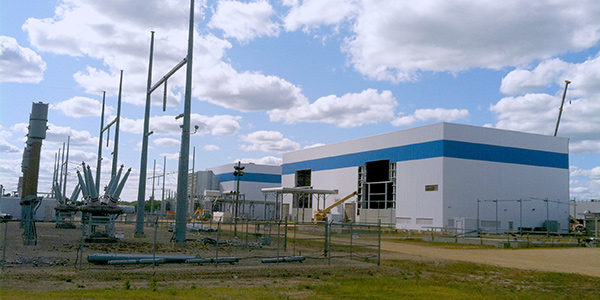By Amanda Durish Cook
MISO can create external zones for its annual capacity auction and place time limits on members’ settlement disputes, FERC ruled in a pair of Oct. 31 orders.
The first order allows MISO to create external resource zones and modify capacity import and export limits to align with them. Excess auction revenues will be divided among load-serving entities with historic supply arrangements that may be affected by the new zones (ER18-2363).
FERC said distinguishing external capacity suppliers from internal ones would preserve the intent of the RTO’s local clearing requirement. “We find it just and reasonable … for MISO to no longer count all external resources, regardless of electrical distance and dispatch control, towards satisfying the local clearing requirements for MISO’s local zones. Continuing to do so would undermine the purpose of the local clearing requirement, which is to ensure that a sufficient amount of unforced capacity is located within each local zone so that each local zone can meet its [loss-of-load expectation] during its local zone peak demand when it is import-constrained,” the commission said.
FERC also brushed aside stakeholder protests that the RTO’s plan was hasty because its current treatment of external resources was not causing reliability issues. “A transmission operator need not wait until there is a reliability event before proposing tariff revisions to prevent one,” the commission said.
It also rebutted municipal agencies’ argument that WPPI Energy’s Nelson Energy Center in Illinois should be considered a border external resource because Exelon’s Quad Cities nuclear plant is considered one. The commission said that while Quad Cities is directly connected to the MISO system, the Nelson plant “requires intervening transmission to reach the MISO transmission system” and doesn’t follow a predictable path. FERC also declined to speculate on municipal agencies’ concerns over how the RTO might treat future external generation using the proposed Grain Belt Express HVDC line, saying such discussion was “premature.”
FERC had rejected MISO’s plan for external capacity zones in August, taking issue with a proposal allowing an external resource bordering more than one local resource zone to choose which zone to participate in during the auction. The commission also rejected a provision that would have allowed holders of evergreen supply contracts written prior to the RTO’s capacity construct to receive historical supply arrangement credits in perpetuity.
MISO responded with edits that made evergreen contract extensions eligible for excess auction revenues for the original term of the contract or two years, whichever is longer, and a new electrical connectivity analysis that ensures external resources bordering more than one local resource zone participate in only one zone. (See MISO Adds Study to 2nd External Zone Filing.)
FERC accepted both changes and said the two-year limit would ensure that resources won’t be able to “permanently avoid the locational price signal that MISO’s resource adequacy construct was designed to provide.” But the commission said that the RTO should notify owners of external resources bordering multiple zones which zone they’ll be assigned to in the upcoming auction. MISO agreed to provide the notice.
Limits on Settlement Dispute Resolution
FERC’s other order allows MISO to bar settlement disputes that are not initiated within approximately four months (ER18-1648-001).
Effective Nov. 1, members have a 120-day time limit for initiating transmission or market settlement disputes and another 90 days to request either an informal or formal alternative dispute resolution if the member doesn’t like MISO’s response. The RTO has two years from the operating day in question to make resettlement corrections. Resettlement outside the two-year cutoff would require MISO and the participant to seek a Tariff waiver with FERC. The commission’s order permits MISO to create a “Limitations on Claims and Adjustments” section of its Tariff.
The 120 days will be counted from the operating day of the market settlement in question or the date of the first transmission settlement invoice. The 90 days are counted from the day the settlement dispute was “resolved or determined” by MISO.
The RTO said the two years would also apply to settlement errors that it “unilaterally discovers without a related dispute submission by a market participant.”
Until now, MISO’s Tariff did not prohibit settlement disputes that are not submitted within specified time periods.
MISO’s first attempt at the dispute resolution filing was met with a FERC deficiency letter, questioning the two-year requirement. (See FERC Seeks Details on MISO Dispute Resolution Plan.) The RTO argued “that the need for market certainty and promptness of claims supports a two-year resettlement period.” It added the definition of “continuing error” to the two-year provision, which covers “continuing, system, software or other execution that is inconsistent with the Tariff.” The term replaces the undefined terms “system error” and “software error,” which MISO used in its first filing.
MISO said it only foresees two kinds of transmission and market settlement errors: those in system procedures or software that take longer to identify or “execution errors,” including human errors, that are more easily identifiable.
FERC said the RTO’s proposal strikes an “appropriate balance between requiring market participants to promptly initiate claims involving readily discoverable one-time MISO errors and the correction of more long-lasting MISO errors that may not be readily discoverable.”






